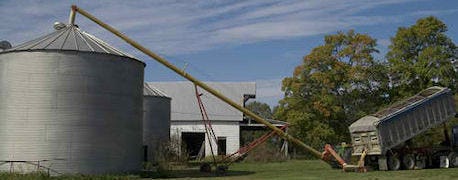
Farmers don't deal with serious ear mold issues every year. If your crop is decent, hopefully you're not dealing with it this year. But if you're not so lucky, you may have concerns about whether or not you have aflatoxin in the field. Chuck Woloshuk, Purdue University plant pathologist, says the best advice is to have ears tested ahead of time so you know if you have an issue or not. If you do, you know you need to bin that corn separately and handle it differently.

DRY IT DOWN: If you're keeping corn with Aspergillus on the farm, segregate it and dry it completely as soon as possible.
Insiders in the grain industry have been trying to get sound information to farmers. The worst possible case is to try to dry corn that has Aspergillus mold on the kernels, and that is producing aflatoxin, sit in a low-heat dryer situation for an extended period. Reports from the field indicate that in just a few days, the measurement of aflatoxin can grow to astronomical levels, perhaps to the point where the corn no longer has value.
The problem is that once harvested, if the Aspergillus fungus adheres to kernels, it's favored by warm, wet conditions and will continue to grow inside the bin on kernels. If it's producing aflatoxin, that will continue also.
The solution, experts say, is to dry the corn as quickly as possible. Chick Woloshuk, a Purdue University plant pathologist, and others who have worked with the fungus, suggest drying it well below normal storage levels. Drying to 12 to 13% may stop the Aspergillus that could be multiplying and spreading to surrounding kernels inside the grain bin.
Apparently, some farmers have the notion that running aflatoxin corn through a high-temperature dryer kills the fungus and ends the problem. Sources say that it doesn't kill it, but it stops it from spreading if it's dried down rather quickly. Unfortunately, some of you may learn more about aflatoxin this year than you really wanted to know.
About the Author(s)
You May Also Like




